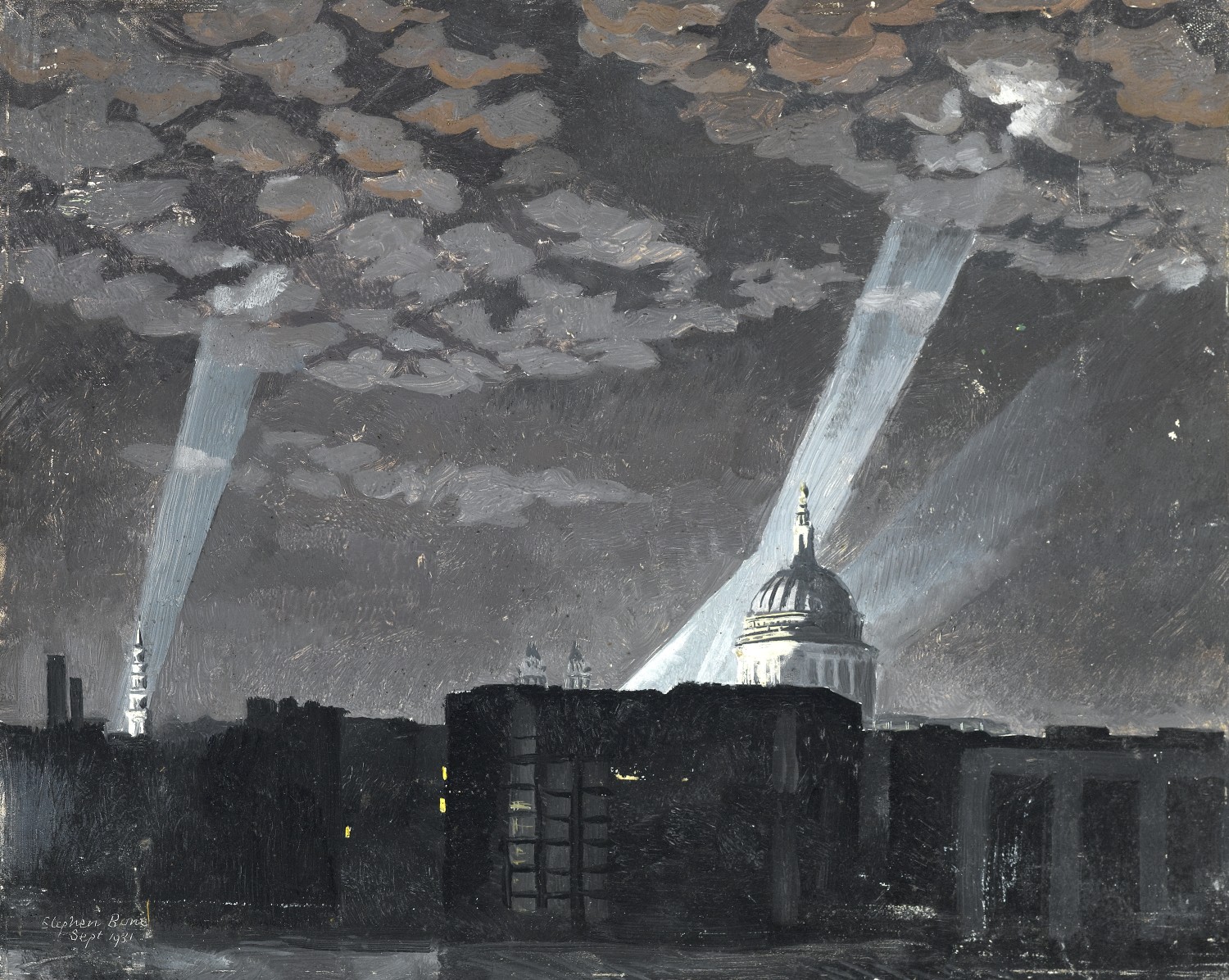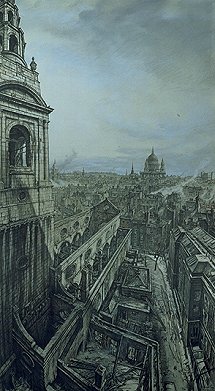NEWS

Exploring our pictorial history
During lockdown I received a present from my good friend, Suzanne Bardgett. It was a copy of her recently published book, Wartime London in Paintings. Featured are over 82 enlightening paintings of scenes in the City during the Second World War, some warm- hearted, others disturbing, all definitely novel, as they are settings one would only encounter in the war.
We see roof spotters looking for enemy aircraft; a panic stricken zebra escaping from the zebra house at London Zoo after it was bombed; a shelter with people huddled together while sleeping in Camden Town under a brewery on Christmas Eve; a bombed cellar next to Holborn Viaduct being lined to form an emergency water tank; a house collapsing on two firemen in Shoe Lane; convalescent nurses making camouflage nets; members of the Auxiliary Fire Services (AFS) standing on the shores of the Serpentine Lake in Hyde Park learning to handle giant hoses through which water was pumped from the lake; members of the Home Guard outside a pub in Maida Vale eyeing an attractive woman as she walks by.
The pictures were commissioned or purchased by the War Artists Advisory Committee (WAAC), a government agency established within the Ministry of Information in 1939, headed by Sir Kenneth Clark. Its raison d’être was to compile a comprehensive artistic record of Britain throughout the war. Some 6000 depictions were amassed. They were given to the Imperial War Museum, other London museums and regional galleries.
As Head of Research at the Imperial War Museum, Suzanne is in an ideal position to appreciate their significance as part of the history of London. Some of the artists whose work was included in the record are well known today, such as Edward Ardizzione, Paul Nash and Stanley Spencer.
I was very drawn to the book because the paintings revealed a dystopian period, evocative of our own times, one where the very nature of life has changed dramatically and unimaginably. Alas, during the Second World War, people could see what they feared coming. What we fear is invisible; where the scourge in our lives in 2020 lurks is a mystery.
As a devoted parishioner of St Bride’s, the most personally meaningful work of art featured is the enormous chalk and ink picture, St Bride’s and the City after the Fire, 29 December 1940, by Muirhead Bone. The drawing was either sketched from the roof of a building behind St Bride’s or from our church’s roof itself. (Suzanne has arranged for us to show the image, which is part of the Imperial War Museum’s art collection, here.)

Its vision is striking in a Christian spiritual context because we see the devastation from an aerial perspective, from the heavens, and we see St Paul’s on the horizon. (Miraculously, St Paul’s did survive the war virtually intact.) This picture and the knowledge of St Paul’s viability in the face of danger gives one a sense of hope, resilience, redemption and the potential for reconstruction. Thankfully, during the next decade, our beautiful Wren church was restored.
Gordon Cooke, writing in The Oxford Dictionary of National Biography, notes that the drawing was Bone’s most important work (presumably for the WAAC). Meirion and Susie Harries have commented in their book The War Artists – British Official War Art of the Twentieth Century that the drawing is “one of the principal tours de force of the Second World War scheme… microscopically accurate”. Cooke considers Bone “among the greatest British draughtsmen, and his images of cities, particularly buildings being built or demolished, display extraordinary technical skill”.
Bone’s son, Stephen (1904 – 1958), was also an artist, renowned as well for being a war artist for the WAAC. Stephen was an art critic, broadcaster and children’s book illustrator. He had worked as a camouflage officer during the earlier part of the war before he was appointed by the WAAC to focus on the Admiralty.
Coincidentally, in 1931, about ten years before his father had created his masterpiece of St Bride’s, Stephen had painted a picture of St Bride’s, one of much smaller dimensions, an oil on panel, titled St Paul’s and St Bride’s Floodlit, 1931. It could be an image of the moment before the bomb struck. (The Liss Llewellyn Gallery has kindly let me share it with you. Copyright The Artist’s Estate, Courtesy of Liss Llewellyn.)
I am thankful that our church is not only a spiritual inspiration to people all over the world but it is also enriching visually, and its pictorial record will undoubtedly enrich its heritage. May these images bring pleasure to my fellow worshippers.
Written by: Jenny Kingsley
Featured image: St Paul’s and St Bride’s Floodlit, Sept. 1931, Stephen Bone, oil on panel, ©The Artist’s Estate, Courtesy of Liss Llewellyn
Posted On: Monday 3rd August, 2020
READ OR LISTEN TO OTHER SERVICES

STAY UP TO DATE
WITH NEWS FROM ST BRIDE’S
Subscribe to our newsletter to receive alerts for
events and advance information about seasonal services.
We protect your data and never overwhelm your inbox.
SUBSCRIBE